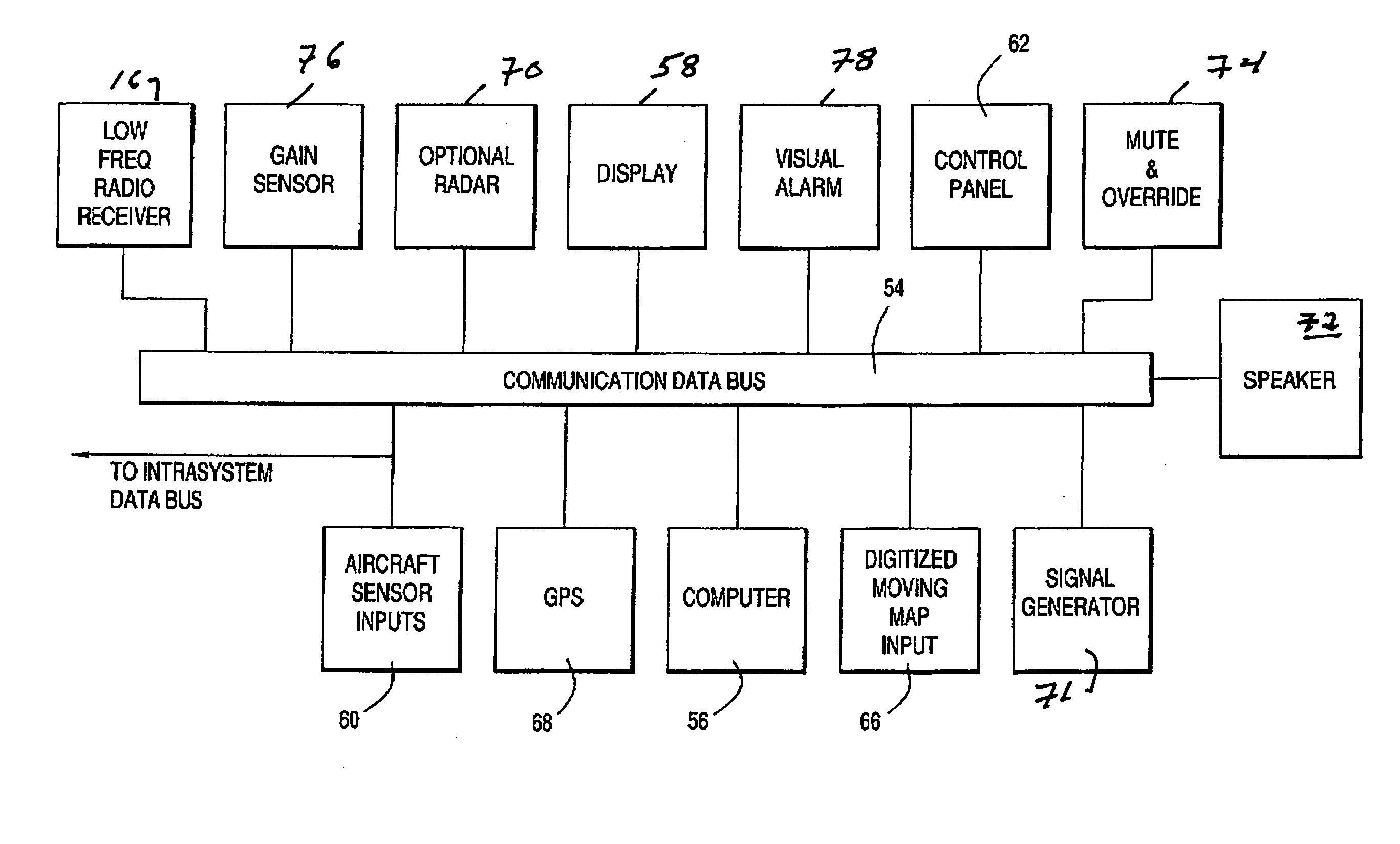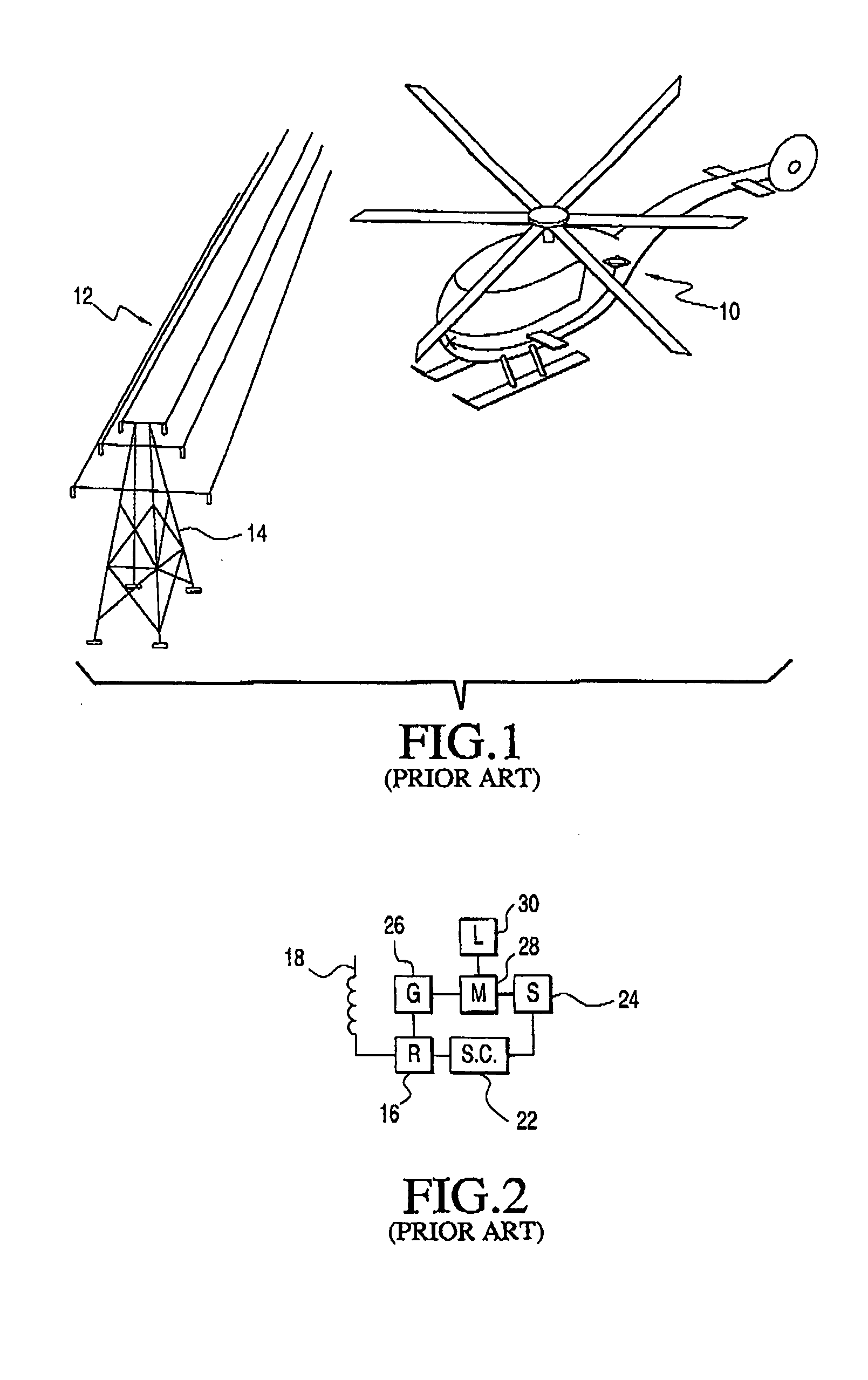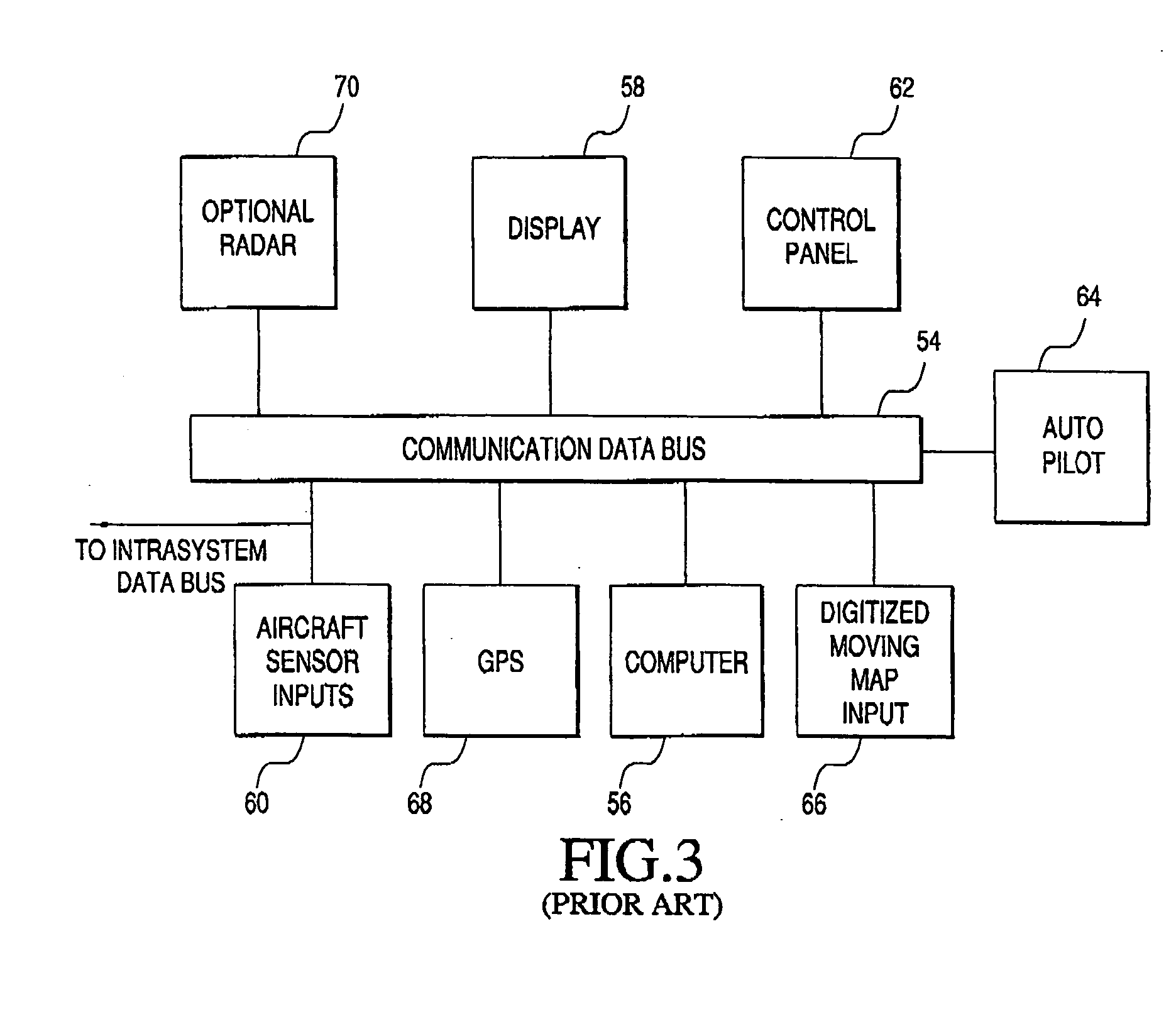Obstacle avoidance system for rotary wing aircraft
a technology for avoiding obstacles and aircraft, which is applied in the direction of process and machine control, using reradiation, instruments, etc., can solve the problems of low flying aircraft, especially helicopters, running the risk of colliding with electrical power lines and other physical obstructions, and power lines are not easy to see, so as to increase the frequency of clicks
- Summary
- Abstract
- Description
- Claims
- Application Information
AI Technical Summary
Benefits of technology
Problems solved by technology
Method used
Image
Examples
Embodiment Construction
[0015]FIGS. 1 and 2 illustrate a prior art power line detection system as described in my aforementioned U.S. Pat. No. 6,002,348 which is incorporated herein in its entirety by reference. As illustrated in FIGS. 1 and 2, a helicopter 10 is shown in proximity to a plurality of power lines 12 which are suspended from a tower 14 in a conventional manner. As disclosed in the patent, a low frequency radio 16 is tuned to a frequency of a power line, about 60 hertz and is adapted to respond to a predetermined output level. This output level is produced when an aircraft flies within the proximity of one or more power lines and is a function of the amount of power being transmitted over the lines and the distance of the aircraft from the power lines. The output of the receiver is then an indication of distance.
[0016] The low frequency radio 16 is operatively connected to an antenna 18 in a conventional manner. Also, the receiver 16 is designed to select a signal of about 50 to 60 hertz from...
PUM
 Login to View More
Login to View More Abstract
Description
Claims
Application Information
 Login to View More
Login to View More - R&D
- Intellectual Property
- Life Sciences
- Materials
- Tech Scout
- Unparalleled Data Quality
- Higher Quality Content
- 60% Fewer Hallucinations
Browse by: Latest US Patents, China's latest patents, Technical Efficacy Thesaurus, Application Domain, Technology Topic, Popular Technical Reports.
© 2025 PatSnap. All rights reserved.Legal|Privacy policy|Modern Slavery Act Transparency Statement|Sitemap|About US| Contact US: help@patsnap.com



